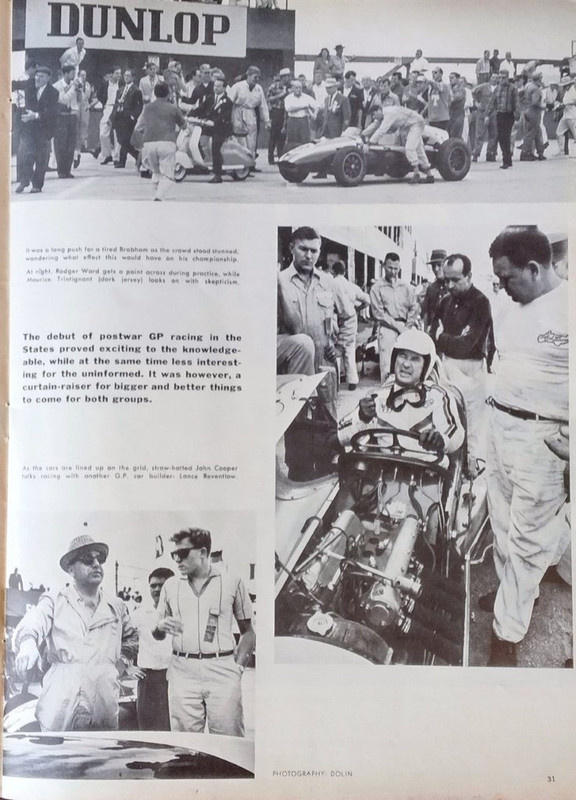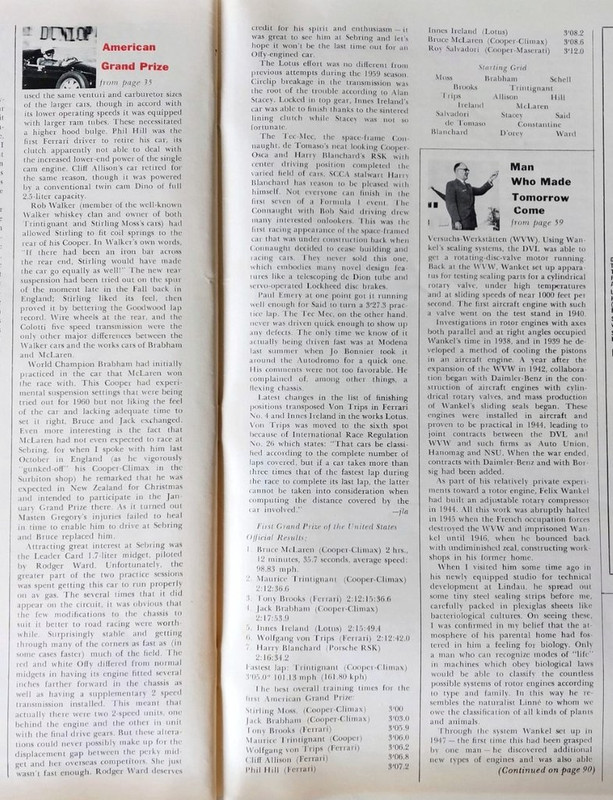Hello
Rodger Ward was entered in the 1959 US GP held in Sebring in a Kurtis Kraft Midget. Midgets could sometimes be reasonably good road racers, as proven by Ward's victory in the 1959 Lime Rock Park Libre race. He has not replicated his success in the Grand Prix, due to better opposition, different track characteristics and some technical problems.
From contemporary reports it seems that the car used an normally aspirated Offenhauser engine in small midget form running on avgas instead of methanol. Fuel choice was due to Formula One regulations. What is not, clear is why the engine had 1.7 or 1.75 liter displacement, when up to 2.5 liter was allowed? Some sources, like the venerable forix http://8w.forix.com/ward.html report that it was due to regulations ("Ward's home advantage was nullified by an Offenhauser engine tuned down to 1.75 liters to comply with F1 regulations."), but this can't be right. Was an engine sized in the middle between 97cu.in midget. and 252cu.in big car unavailable? So what engine was used in the Lime Rock race?


















